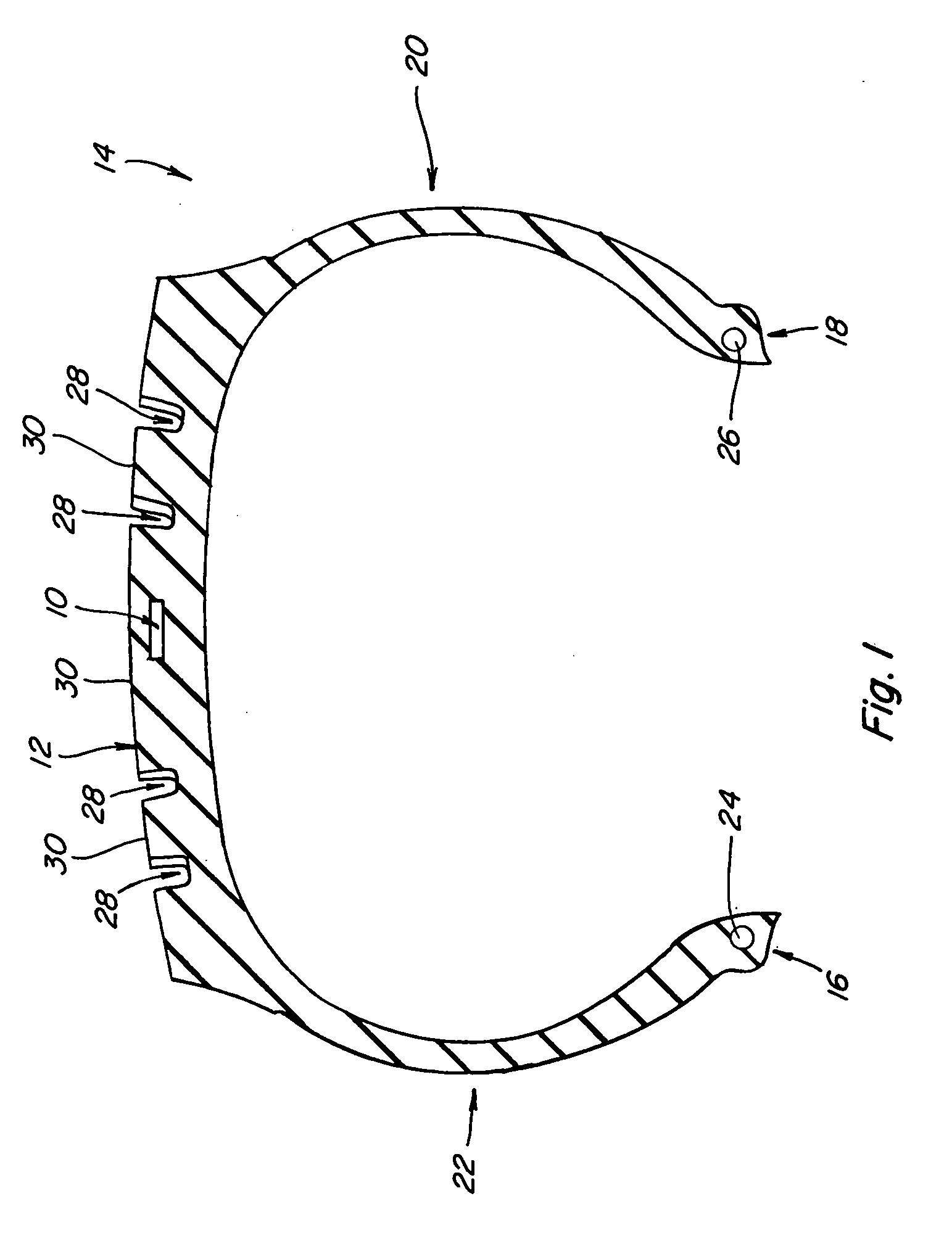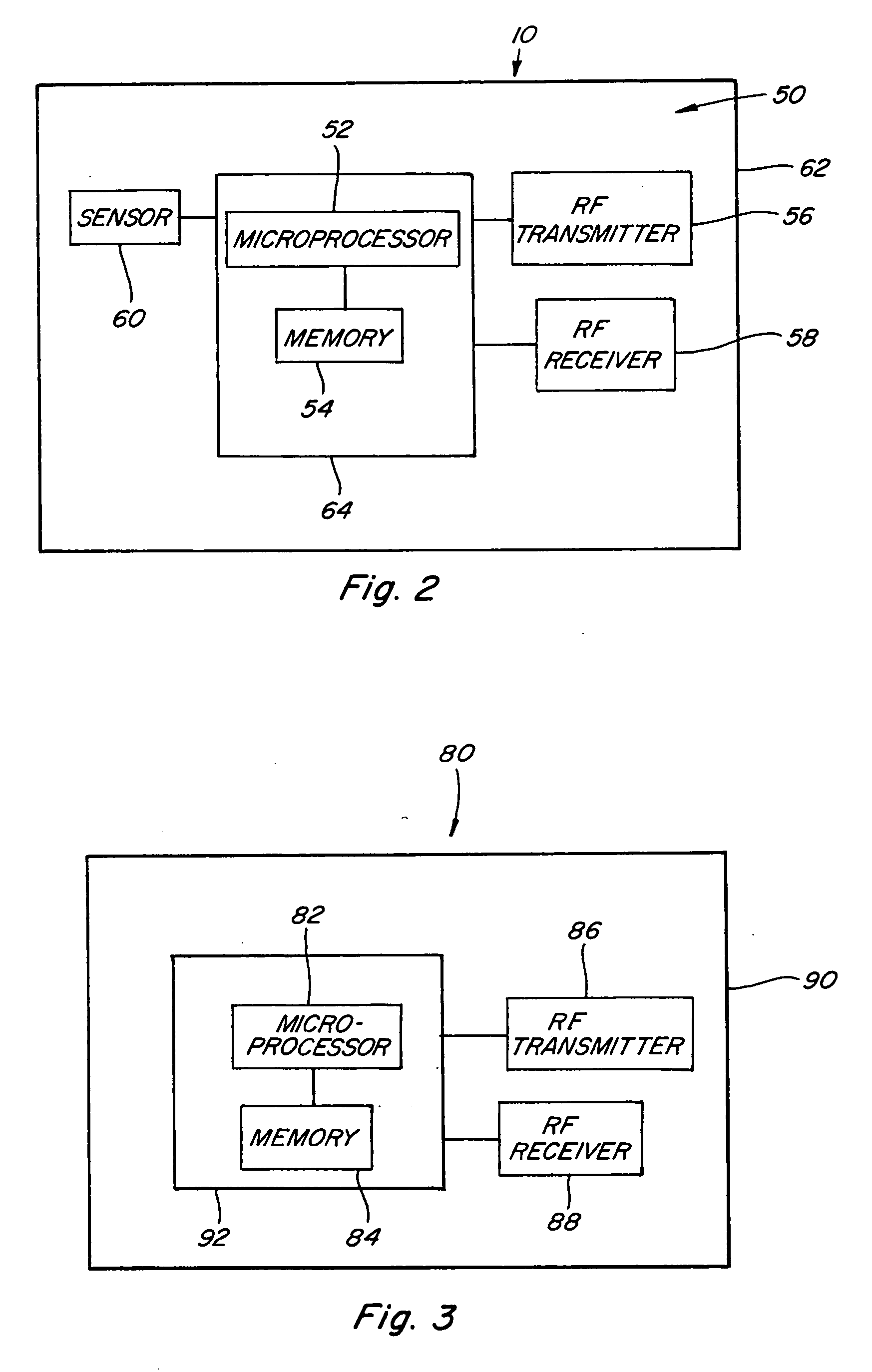Tire wear sensor
a technology of tire wear and sensor, which is applied in vehicle tyre testing, instruments, roads, etc., can solve the problems of tire wear down the tread portion of the tire, tire treads that are limited in life, and tires that are no longer able to perform the intended functions, etc., to achieve simple construction and design, high reliability, and easy use.
- Summary
- Abstract
- Description
- Claims
- Application Information
AI Technical Summary
Benefits of technology
Problems solved by technology
Method used
Image
Examples
Embodiment Construction
[0025] Referring now to the drawings, wherein like numbers refer to like items, number 10 identifies a preferred embodiment of a tire wear sensor constructed according to the present invention. With particular reference to FIG. 1, the tire wear sensor 10 is shown embedded within a tread portion 12 of a tire 14. The tire 14 is shown in cross-section having a pair of bead portions 16 and 18, a pair of sidewall portions 20 and 22, and the tread portion 12 toroidally extending between the sidewall portions 20 and 22. The tire 14 may also include a bead core 24 embedded in the bead portion 16 and a bead core 26 embedded in the bead portion 18. Although not shown, the tire 14 may further include other components such as a belt or belts, belt plies, plies, cords, and an air impermeable liner. The tread portion 12 may include grooves 28 and ribs 30. The grooves 28 and the ribs 30 may take on any known tread pattern or tread design. The tire wear sensor 10 is molded in place in the tread por...
PUM
 Login to View More
Login to View More Abstract
Description
Claims
Application Information
 Login to View More
Login to View More - R&D
- Intellectual Property
- Life Sciences
- Materials
- Tech Scout
- Unparalleled Data Quality
- Higher Quality Content
- 60% Fewer Hallucinations
Browse by: Latest US Patents, China's latest patents, Technical Efficacy Thesaurus, Application Domain, Technology Topic, Popular Technical Reports.
© 2025 PatSnap. All rights reserved.Legal|Privacy policy|Modern Slavery Act Transparency Statement|Sitemap|About US| Contact US: help@patsnap.com



